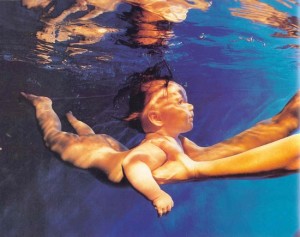Water births, or giving birth while you are immersed in a pool of warm water, is a birthing method that has become increasingly more common in the UK over the last two decades. And as usual its rising popularity is accompanied by some controversy in the world of medical professionals.
On one hand, water births have been credited with several benefits including:
- Shorter labour,
- A mother-focused environment where the mother can actually see the entire birth,
- A less painful birth for the mother and a reduced risk of perineal trauma and need for episiotomies, because the warm water relaxes the muscles of the uterus,
- A less traumatic birth for your baby as the warm water environment resembles the amniotic sac allowing for a smoother transition into the world,
- A reduction in the mother’s stress hormones and an increases in her endorphin levels, because the buoyancy of the water means there is no gravitational strain on the mother’s body,
- The umbilical cord pulsates for longer which helps to replace the baby’s damaged red blood cells with healthy ones.
On the other hand, several medical professionals say there is absolutely no evidence to support the claim that water births aid the baby’s transition into the world, shorten the length of labour and reduce the risk of perineal tears. In fact there are many risks involved with water births, such as:
- Drowning, which has previously occurred in Ireland and New Zealand,
- Respiratory distress syndrome and respiratory failure due to water aspiration,
- Pneumonia,
- Snapped umbilical cords which can cause major blood loss,
- Infection due to fecally contaminated water,
- Less access to necessary resources if serious complications occur.
Unfortunately, there is currently no evidence to prove whether water births are any more or less risky than natural (land) births. Would you give it a try?
